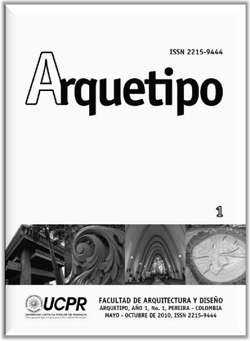Entre el khôra platónico y el topos aristotélico Una aproximación hacia la construcción teórica del espacio público
Keywords:
Architecture, public space, philosophy and space, theory of the architecture and the cityAbstract
Frequently reflects the concern about the importance of theoretical reflections that have todo with architecture. Above these reasons, it is pertinent to deal, before the particular issueof public space as architectural act individually or as a product of culture, thought thataccompanies it. It would not be wise to imply that the architects have trivialized the problemof space, what is certain is that in a broad spectrum have not taken a position against himand have taken as a given, as a working tool whose function is more instrumental than anyother and, on the other side, there has been a constant concern to generate deep and criticaldiscussions on the subject. Is the case then consider that this type of theoretical reflectionsshould not be in the foreground from the architecture, which is why it is viable to make themfirst from philosophy.
References
Aristóteles. (1979). Metafísica. México: Porrúa.
Benjamin, Walter. (1973) Título original: Eitalter seiner technischen Reproduzierbarkeit. (Trad. Cast.: La obra de arte en la época de su reproductibilidad técnica. En: Discursos Interrumpidos I. Madrid: Taurus)
Bollnow, f,o. (1969). Hombre y espacio. Barcelona: Editorial Labor.
Compagnon, Antoine. (1993). Las cinco paradojas de la modernidad. Título original: Les cinq paradoxes de la modernité. Caracas: Monte Ávila Editores.
Danto, Arthur. (1999). Después del fin del arte: El arte contemporáneo y el linde de la historia. Barcelona: Paidós.
Descartes, R. (1986). Discurso del método. Bogotá: Ediciones Universales.
_________ . (1967). Obras escogidas. Buenos Aires: Editorial Sudamericana.
Giedion, S. (1981). El presente eterno: comienzos de la arquitectura. Madrid: Alianza Forma Editores.
Gombrich, E. (1954). Historia del arte. Barcelona: Argos s.a. 2° edición.
Hegel. G,w. (2002). Lecciones de estética. México:Ediciones Coyoacán, 2a edición
Heidegger, M. (1994). Construir, habitar, pensar. (trad. Cast.: Eustaquio Barjau, en: conferencias y artículos. Barcelona: Serbal.
Jammer, M. (1970) conceptos de espacio. México:Editorial Grijalbo S.A.
Koyré, A. (1979). Del mundo cerrado al universo infinito. Madrid: Siglo XXI Editores de España S.A.
Kruft, H. W. (1994). A History of Architectural Theory from Vitrivius to de present. New York: PrincetonArchitectural Press.
Lefevre, H. (1974). La production de l´espace. Paris: Antrophos.
Marías, Julián. (1990)]. Historia de la Filosofía. Madrid: Alianza Editorial.
Muntañola, J. (1996). La arquitectura como lugar. Barcelona: ediciones UPC Universidad Politécnica de Cataluña.
Newton, I. (1993). Principios matemáticos de filosofía natural. Altaya.
Ponty, M. M. (1975). Fenomenología de la percepción. Barcelona: Península.
Platón. (1994). Timeo o sobre la naturaleza. Diálogos. Madrid: Gredos.
Tatarkiewicz, Wladislaw. (1997). Historia de seis ideas. España: Edigrafos, 6a Edición.

